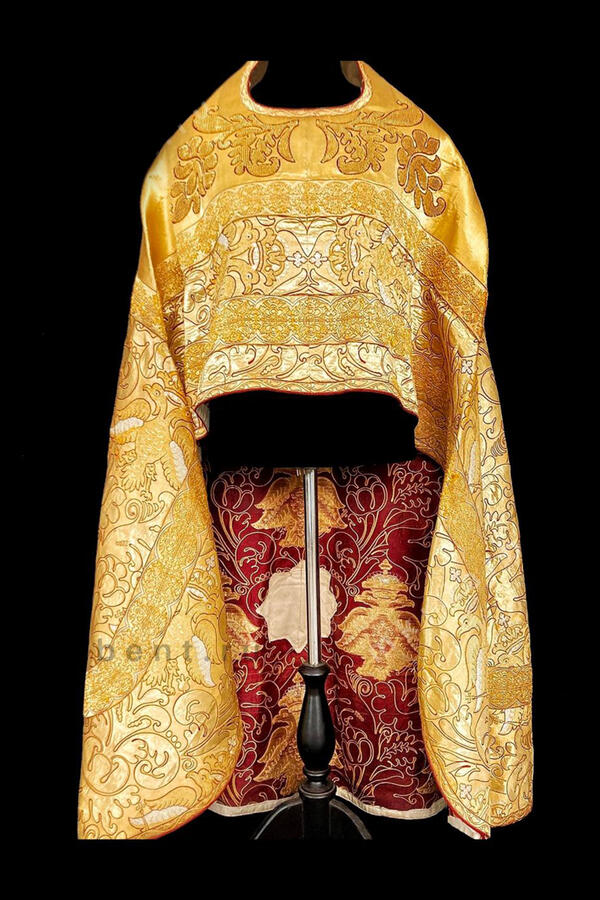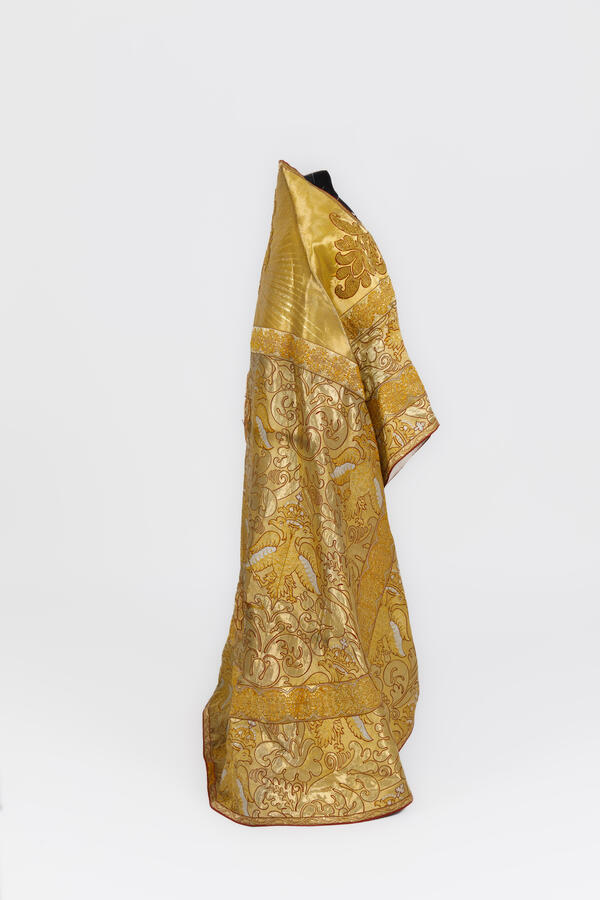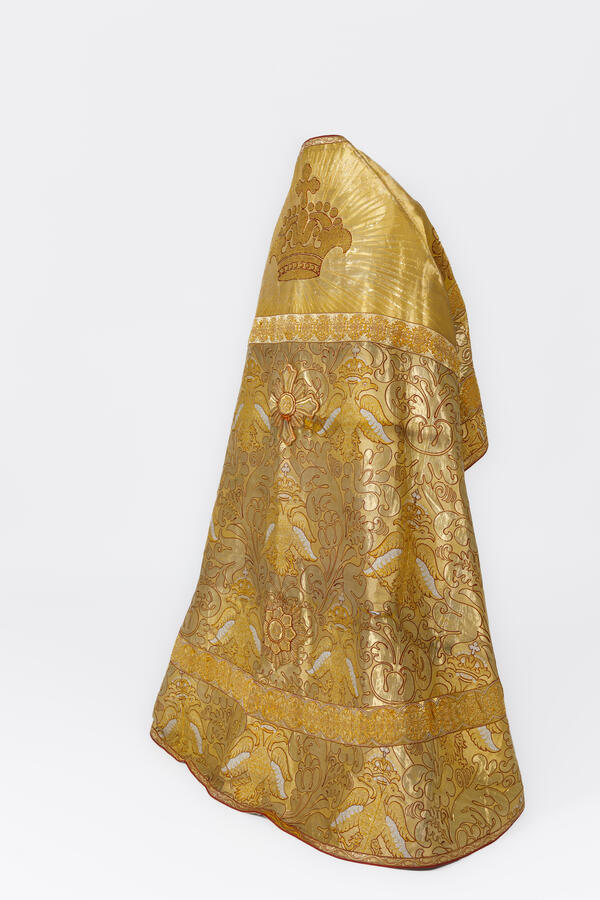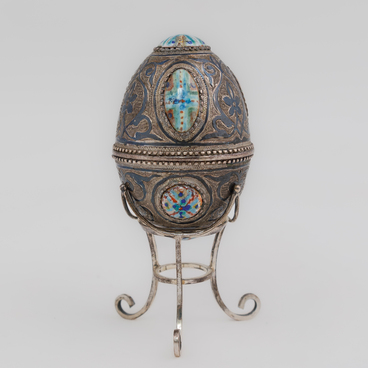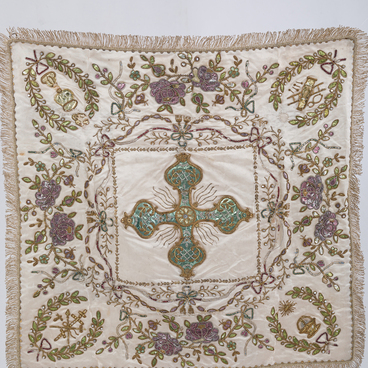A phelonion (or riza in Russian) is the outer liturgical vestment of an Orthodox priest. In translation from Greek the word “phelonion” means “to shine”, and “riza” in Old Russian means “clothing”. In ancient times it was a white cloak made of a long rectangular piece of woolen cloth for protection from the cold and bad weather. It was worn over one or both shoulders, with the front ends tightened on the chest. The cloak often had a hole cut in the center of it, and the phelonion, worn on the shoulders, covered the entire body in front and from behind.
The Jews trimmed the outer clothing for priests with laces. Along the sides craftsmen sewed a blue cord with tassels or fringes, which served as a reminder of the commandments and the law of God. According to legend, in his earthly life, Jesus Christ wore such a garment. Ancient icons depicted him wearing a mantle, put on both shoulders, or thrown over one shoulder. As ministers of Christ, priests should be clothed in a similar garment of truth, power, and illumination.
In Catholicism and Lutheranism, the phelonion is called a chasuble and is sewn in the Romanesque or Gothic manner. In Judaism, the edges of the clergy garments were decorated with ornamental pendants or tassels. Along the sides of this trim, craftsmen sewed a blue cord with tassels or fringes, which served as a reminder of the commandments and the law of God. According to legend, in his earthly life, a cape similar to a phelonion was worn by Jesus Christ. Ancient icons depicted him wearing a cloak over both shoulders, or thrown over one shoulder. As ministers of Christ, priests should be clothed in a similar garment of truth, power, and illumination.
Since the 16th century, the phelonion in Russia was sewn from heavy brocade, and the mantle had a solid, high frame, so that it rose above the shoulders of the priest. The gold-colored phelonion from the collection of the Museum of the History of World Cultures and Religions dates back to the 19th century. Such vestments are traditionally used for Sunday and weekday services, except for commemorations of saints. The vestment features a cross — the main symbol of the Christian faith, the sign of Jesus Christ’s crucifixion and his sacrifice for love of people. The cross is placed under the mantle, thus referring to the wounded shoulders of the Savior.
The golden phelonion features an eagle with two heads and lowered wings. It clutches a truncated rod in the claws of its right paw, and above its head is a large royal crown with a cross. These symbols on the clergy clothes show their connection with power and affiliation to the higher class. A large crown with a cross tops the vestment and shows that the king alone rules the state on earth, but above him, in heaven, there is only God.
The Jews trimmed the outer clothing for priests with laces. Along the sides craftsmen sewed a blue cord with tassels or fringes, which served as a reminder of the commandments and the law of God. According to legend, in his earthly life, Jesus Christ wore such a garment. Ancient icons depicted him wearing a mantle, put on both shoulders, or thrown over one shoulder. As ministers of Christ, priests should be clothed in a similar garment of truth, power, and illumination.
In Catholicism and Lutheranism, the phelonion is called a chasuble and is sewn in the Romanesque or Gothic manner. In Judaism, the edges of the clergy garments were decorated with ornamental pendants or tassels. Along the sides of this trim, craftsmen sewed a blue cord with tassels or fringes, which served as a reminder of the commandments and the law of God. According to legend, in his earthly life, a cape similar to a phelonion was worn by Jesus Christ. Ancient icons depicted him wearing a cloak over both shoulders, or thrown over one shoulder. As ministers of Christ, priests should be clothed in a similar garment of truth, power, and illumination.
Since the 16th century, the phelonion in Russia was sewn from heavy brocade, and the mantle had a solid, high frame, so that it rose above the shoulders of the priest. The gold-colored phelonion from the collection of the Museum of the History of World Cultures and Religions dates back to the 19th century. Such vestments are traditionally used for Sunday and weekday services, except for commemorations of saints. The vestment features a cross — the main symbol of the Christian faith, the sign of Jesus Christ’s crucifixion and his sacrifice for love of people. The cross is placed under the mantle, thus referring to the wounded shoulders of the Savior.
The golden phelonion features an eagle with two heads and lowered wings. It clutches a truncated rod in the claws of its right paw, and above its head is a large royal crown with a cross. These symbols on the clergy clothes show their connection with power and affiliation to the higher class. A large crown with a cross tops the vestment and shows that the king alone rules the state on earth, but above him, in heaven, there is only God.

